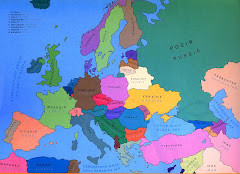 Above Ira, Luba in center, Luda. Right, another
Above Ira, Luba in center, Luda. Right, another Luba and another Ira, and me, all good friends.
Luba and another Ira, and me, all good friends. Learning the Russian language has been my greatest challenge. At times this is the most frustrating thing imaginable. Mostly when we long to have a conversation on a deeper level than лривет и как дела, или добри день и сбасибо или что ты делала сегодня.
Luba's been going through a hard time for six months now. It's about her 40-something son being in trouble. It started in April and hasn’t let up. As usual I don't know the whole story. I only know Sergei is away and Luba is distraught. I hear her cry. I hear her pray. I see her aging under the burden.
I understand because I am a mom, too. I know how mother's worry about their kids, no matter what age. Mothers want what is best for them, what makes them happy. We pray they stay safe and healthy, and their kids, our grandkids, do too. But kids make mistakes. We all make mistakes. Some worse than others. And then we have to live with them.
So Luba is going through a hard time, a sad time. We are grieving together, she for her son, I for my brother, but we can't talk about it. I am stuck with a modest level of Russian. понялаюю зто оцень пецальноюю я чотела ты помоцью мне грустно зха васюю That's why I am glad she has so many friends, and that they have stuck by her. She is an extrovert and loves being around people. Her two best friends, Luda and Ira, come often. Luda is serious, Ira funny, and Luba keeps them going! Her friends Luba and Ira 2 are also stalwarts, here when Luba needs them. I enjoy being with them, even though I get only about 50% of what they are saying. They laugh, and gesture, and sometimes speak slowly in case I might get it.
Luba's been going through a hard time for six months now. It's about her 40-something son being in trouble. It started in April and hasn’t let up. As usual I don't know the whole story. I only know Sergei is away and Luba is distraught. I hear her cry. I hear her pray. I see her aging under the burden.
I understand because I am a mom, too. I know how mother's worry about their kids, no matter what age. Mothers want what is best for them, what makes them happy. We pray they stay safe and healthy, and their kids, our grandkids, do too. But kids make mistakes. We all make mistakes. Some worse than others. And then we have to live with them.
So Luba is going through a hard time, a sad time. We are grieving together, she for her son, I for my brother, but we can't talk about it. I am stuck with a modest level of Russian. понялаюю зто оцень пецальноюю я чотела ты помоцью мне грустно зха васюю That's why I am glad she has so many friends, and that they have stuck by her. She is an extrovert and loves being around people. Her two best friends, Luda and Ira, come often. Luda is serious, Ira funny, and Luba keeps them going! Her friends Luba and Ira 2 are also stalwarts, here when Luba needs them. I enjoy being with them, even though I get only about 50% of what they are saying. They laugh, and gesture, and sometimes speak slowly in case I might get it.
I console myself that I may not know the language very well, but I understand the feelings. They are universal. They involve children, families and friends. They are matters of the heart.











 amazement.
amazement.









































